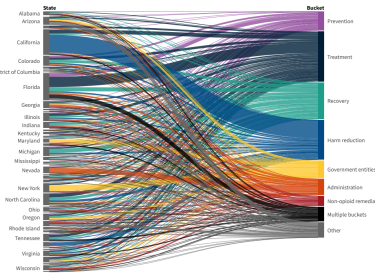
Eye-opening Facts About Caffeine
As a registered dietitian, I get a lot of questions about coffee, tea, and other caffeinated beverages. Is it good for me? Bad for me? How much should I drink? Why does it make me pee so much?! I’ve compiled a little list of 8 things that you may or may not know about caffeine for you to whip out at your next water cooler chat.
1. How much caffeine is okay to drink? For most adults, up to 400 mg a day of caffeine appears to be perfectly safe. 1 That’s between two and four cups. (One eight-ounce cup of coffee can range anywhere from 100-200 mg of caffeine—thank Starbucks for that higher number). Also, maybe surprisingly: the lighter the roast, the higher amount of caffeine. So if you think you are going to get extra caffeine by going dark and bold for that mid-morning pick-me-up, think again.
2. Caffeine and coffee are often synonymous in the public’s mind. But did you know that caffeine is found in more than 60 other plants besides the coffee bean, including the cola nut and cacao?2 It is a powder found in seeds, leaves, and fruits of some plants that has a bitter taste, allowing it to act as a natural pesticide and discourage insects from eating the plants it it is made in. It is also noted to have some strong antioxidant properties, although scientists are still studying any benefits or risks. 3
3. Caffeine is a relatively quick-acting substance that will cause stimulant effects within an hour of consumption and wear off about 5 hours later. This is why you may want to skip the dessert coffee, or risk a night of insomnia! 3
4. If you have that one friend who swears coffee doesn't affect her, she might be right. There are genetic factors that will affect the rate at which people break down caffeine in the body. That friend of yours might metabolize caffeine very quickly, while you metabolize it slowly, allowing pronounced effects.3
5. According to a meta-analysis of 105 studies, coffee consumption has been associated with a decreased risk for several cancers such as oral, pharyngeal, colon, liver, prostate, endometrial cancer and melanoma.4 It has also been shown to be associated with a decreased risk of developing type 2 diabetes mellitus.
6. The psychiatrists and psychologists holy grail, the DSM IV, does not currently list habitual caffeine use as a disorder. Caffeine withdrawal, on the other hand, is diagnosed as a formal disorder. The World Health Organization actually categorizes caffeine as a psychostimulant. However, more studies are needed on the potential for addiction.
7. 54% of Americans drink coffee daily. Moreover, the average American consumes 3.5 cups of coffee every day.5
8. Lots of people think that espresso is packed with more caffeine than regular coffee—but that’s not the case, based on usual consumption. A service of espresso is typically one ounce, containing 30-90 mg of caffeine, as opposed to the eight-ounce serving of coffee.
As with many things in diet and nutrition, the advice continues to be: Enjoy your caffeine in moderation!
Jess graduated from Boston University with a Masters of Science in Nutrition. She currently works as a Renal Dietitian at a Boston hospital. When not at the hospital, you can find her baking healthy and unhealthy (yes, dietitians like to eat junk food sometimes too!) foods in the kitchen for her husband and son.
Originally published in 2018.



